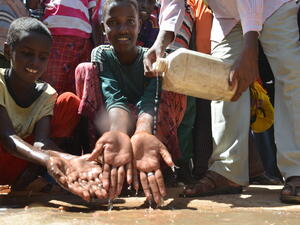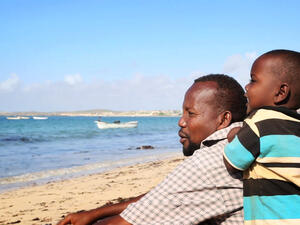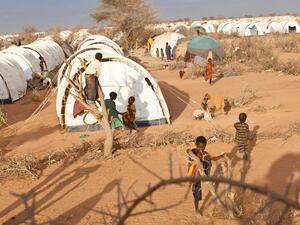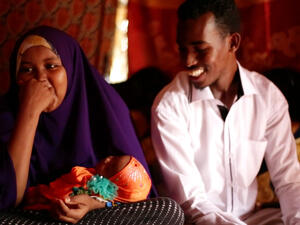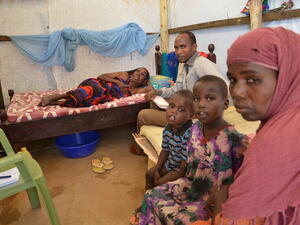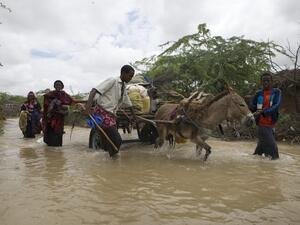200-300 Somalis fleeing to north-east Kenya daily
200-300 Somalis fleeing to north-east Kenya daily
We are still seeing a steady stream of between 200-300 Somali refugees fleeing daily to north-eastern Kenya to escape fighting in south and central Somalia. The total number of new Somali refugees who have arrived in Kenya since the beginning of the year now stands at over 25,000 - more than 5,000 in September alone. Over 60 percent the past month's arrivals are under the age of 18, and many of the families are headed by women. The refugees say males stay behind to take care of other family members unable to leave and to look after family businesses or property.
The refugees are fleeing Mogadishu, Somalia's capital, and the Kismayo area following repeated clashes between the Islamic Courts Union and warlord militia. Others fled the Baioda area, headquarters of the Transitional Federal Government.
The majority of those fleeing to Kenya continue to use the border crossing at Liboi. After screening them at the border, UNHCR transports the refugees to Dadaab, a complex of three camps already hosting 134,000 refugees, mainly Somalis. We are also beginning to receive refugees at a second border crossing at Amuma, some 80 km south of Liboi. Some refugees are also going directly to the Dadaab camps without passing through the two main border points.
On Wednesday, we got approval from provincial authorities to set up a reception centre in the site of an old transit facility in Liboi. The old facility, which is located a kilometre from the current location, was previously used by UNHCR to shelter refugees fleeing the outbreak of civil war in Somalia in 1992. We are still using temporary reception structures which were set up in a compound also housing the Kenyan police and the immigration services.
Construction materials for a new reception centre in Liboi have already been sent from Nairobi and are expected to arrive in Dadaab soon. We have also received additional stocks of domestic supplies sufficient for up to 25,000 new arrivals. With the new stocks, we will be able provide items such as soap, blankets, mats, jerry cans and kitchen utensils to all new arrived families. Until now, because of insufficient stocks, our distribution of household supplies has been limited to the most vulnerable families. We are still in urgent need of clothes for the new refugees. Children especially are wearing tattered clothes after walking long distances for weeks with only the clothes on their backs.
A team of medical experts from Kenya's Ministry of Health as well as from the World Health Organization (WHO) visited Liboi and other border areas on Wednesday. They have pledged to provide additional health workers to ensure proper screening for communicable diseases among the refugees, as well as immunization or treatment against polio, measles and tuberculosis for all newly arrived refugee children under the age of five. This will reinforce the efforts of our health partner - GTZ - which has been doing medical screening, providing first aid and giving vaccinations. The visiting medical team also pledged to provide more stocks of vaccines.
CARE, which handles education in the camp, has been trying to encourage the new refugee families to send children to school. However, we are going to need additional resources ensure all the children can attend - new classrooms, desks, text books, teaching materials and other supplies.
We are currently working to expand the three existing camps in Dadaab to make room to another 25,000 people as more refugees keep crossing from Somalia.


